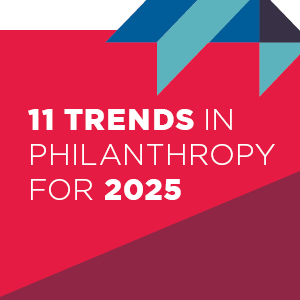Four Key Factors are Driving a Surge in Nonprofit Lobbying Activities
This article unpacks the hurdles, successes, and future opportunities shaping the sector’s evolving role in policymaking — and why it matters now more than ever.


















This article unpacks the hurdles, successes, and future opportunities shaping the sector’s evolving role in policymaking — and why it matters now more than ever.
Volunteer programs remain underfunded and undervalued, despite evidence linking them to broader philanthropic participation. Nonprofits and funders must invest in new approaches and rethink opportunities to fit the needs of new generations.
Art is an effective way to engage youth and increase their motivation and passion for philanthropy. This post suggests several ways to embed art in youth philanthropy programs to strengthen young people’s drive to make positive change.
Recent research illustrates the undeniable rise of funder collaboratives. These new partnerships are a starting point for change — and for moving hundreds of millions of dollars.
Methods for holding a nonprofit accountable — for their actions, fiscal choices, community relationships, etc. — have not always been clear, accessible, or publicized. That seems to be changing now.
As journalism’s traditional business model continues to stumble, many for-profit news outfits — legacy brands and 21st-century digital natives alike — are moving to explore, adapt, and adopt the nonprofit model.
As more nonprofits and funders look to further their impact and sustainability, power and equity are at the center of a growing movement to reimagine the language and practices of capacity building.
By Tory Martin
Volume 15, Issue 1 of The Foundation Review highlights ways foundations can support collaboration among nonprofits and communities to increase and sustain the impact of programs and initiatives over time.
Efforts to alleviate burnout and economic and workplace inequity are leading more nonprofits to look for opportunities to spread the work, responsibility, and credit among more staff — and even other organizations.
After decades of declining enrollment, organized labor is back on workers’ minds — including in the nonprofit sector — as staff see unionization as a pathway to better pay, greater wellbeing, and increased equity.